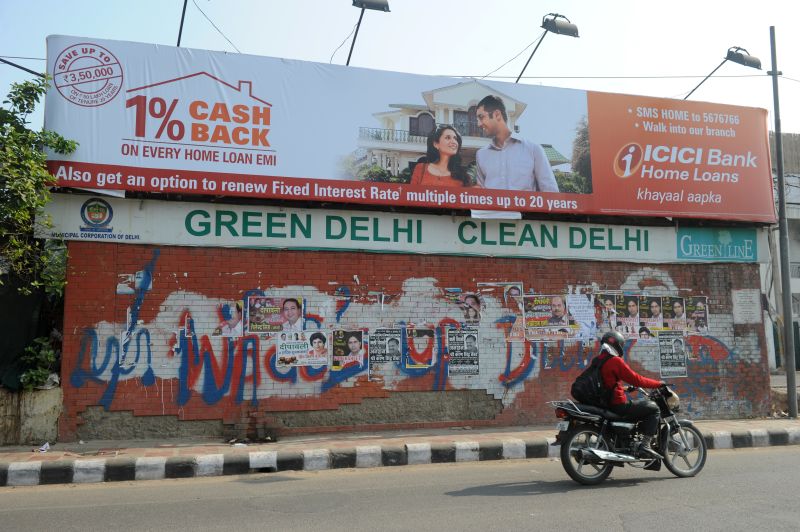German ODA
Lighthouse projects

Climate action
At the Paris Climate Change Conference in 2015, India agreed to become more climate-friendly by 2030 although it did not set itself any absolute emission targets. The country aims to reduce the carbon intensity of its economy by up to 35 %. This is not much more than the anticipated reduction resulting from the past two decades of technological progress. And yet it marks a new shift: for the first time, India has made an international commitment to work to mitigate the effects of climate change.
At least some of the national targets are ambitious. The share of power generated from non-fossil fuel sources will be increased to 40 % by 2030 – from around 14 % at present. Renewable energy output will rise to 175 gigawatts (GW) by 2022 (currently around 30 GW), the lion’s share generated from solar power (8 GW today, 100 GW in 2022).
Germany is supporting that process. In the past three years, € 1.4 billion (including market funds) have been provided to create Green Energy Corridors (GECs) for feeding electricity from renewable sources into the Indian grid. Furthermore, October 2015 saw the launch of the Indo-German Solar Energy Partnership. Its aim is to promote rooftop solar installations, solar-based decentralised rural electrification and solar parks. € 550 million was pledged in 2015 and 2016, and the implementation phase has started. Compared to a conventional expansion scenario, the Indo-German solar partnership will save around 30 million tonnes of carbon dioxide over a period of 25 years.
Urban development
This focal area is largely geared to the Smart Cities, Atal Mission for Rejuvenation and Urban Transformation (AMRUT) and Ganges clean-up initiatives established by Narendra Modi’s government in 2015. India’s central government is spending around $ 33 billion on the projects. This is not much, however, considering the massive urban investment required – estimated at $ 1.2 trillion in 2010 by the consultancy McKinsey – and the limited financial resources of Indian cities.
Urban development advice, sanitation and climate-friendly urban mobility are core areas of German involvement. In 2016, the Federal Ministry for Economic Cooperation and Development (BMZ) and the Federal Environment Ministry (BMUB) established a German partnership with three medium-sized cities selected for the Indian government’s Smart Cities programme: Kochi, Coimbatore and Bhubaneswar. The aim is to bundle activities in DC, business, science and research and to harness German experience. The total funding volume already exceeds € 700 million and will be increased.
In Kochi, for example, the focus is on integrated solutions for public transport, including waterways (ferries). € 85 million has so far been made available for the project. India wants and needs innovative solutions for instance for smart decentralised wastewater infrastructures or the introduction of e-mobility in urban areas. DC should be particularly creative here and develop solutions that are also relevant for Germany in the future. For instance, German DC could help make solar-powered motorcycle rickshaws available for passengers at Indian underground stations. (wk)








